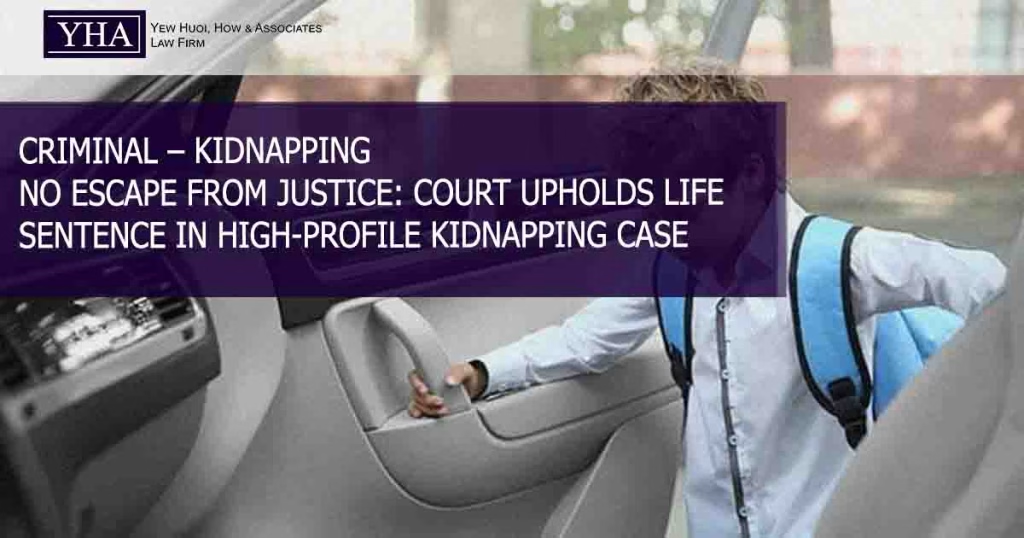1. Summary and Facts:
In Quaik Yong Lai & Ors v Public Prosecutor [2025] 1 MLJ 771, the appellants were convicted under Section 3(1) of the Kidnapping Act 1961, read with Section 34 of the Penal Code, for the kidnapping of a 10-year-old child for ransom. The victim was abducted outside his tuition centre and released after RM1.75 million was paid. The appellants were arrested following investigations, and their statements led to the recovery of part of the ransom money. They denied involvement and challenged the conviction on grounds of defective charge, flawed identification, lack of evidence of ransom demand, and inadmissibility of discovery evidence. The High Court sentenced them to life imprisonment and ten strokes of the whip, which they appealed.
2. Legal issues:
i. Whether the charge was defective for failing to clearly distinguish between abduction and confinement?
ii. Whether the identification parade was improperly conducted, leading to unreliable identification evidence?
iii. Whether the prosecution had proven the ransom demand, as this was a crucial element of the offence?
iv. Whether the statements leading to the discovery of ransom money were admissible under Section 27 of the Evidence Act 1950?
v. Whether the appellants acted in furtherance of a common intention under Section 34 of the Penal Code?
3. Court Findings:
• The court held that the charge was clear and unambiguous, allowing the appellants to mount a proper defence.
It is fair to say that the appellants knew what was the case against them.
• The identification parade was found to be properly conducted, and the victim’s identification of the appellants was credible and reliable. The victim had sufficient opportunity to observe the accused, and his testimony remained consistent.
• The court ruled that the ransom demand was proven, supported by the mother’s testimony and forensic verification of the recovered ransom money.
• The statements made by the appellants, which led to the recovery of ransom money, were held to be admissible under Section 27 of the Evidence Act 1950, as they resulted in the discovery of key evidence.
• The court found that the appellants had acted together in furtherance of a common intention, making them equally liable. Their actions were interconnected, and the kidnapping could not have been executed without joint effort.
• The Court of Appeal dismissed the appeal, affirming the conviction and sentence of life imprisonment and ten strokes of the whip.

